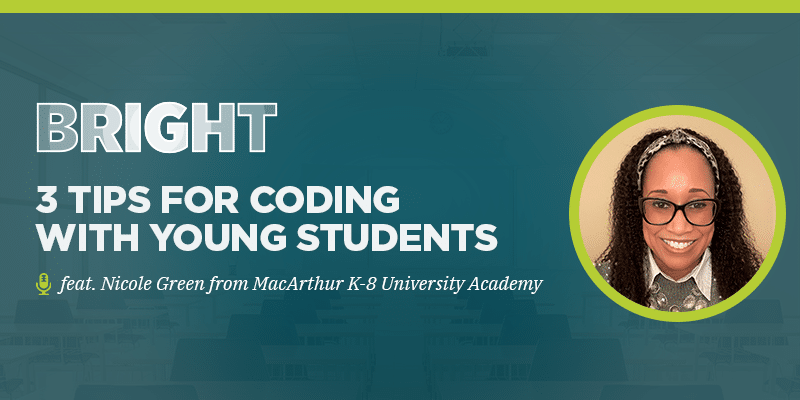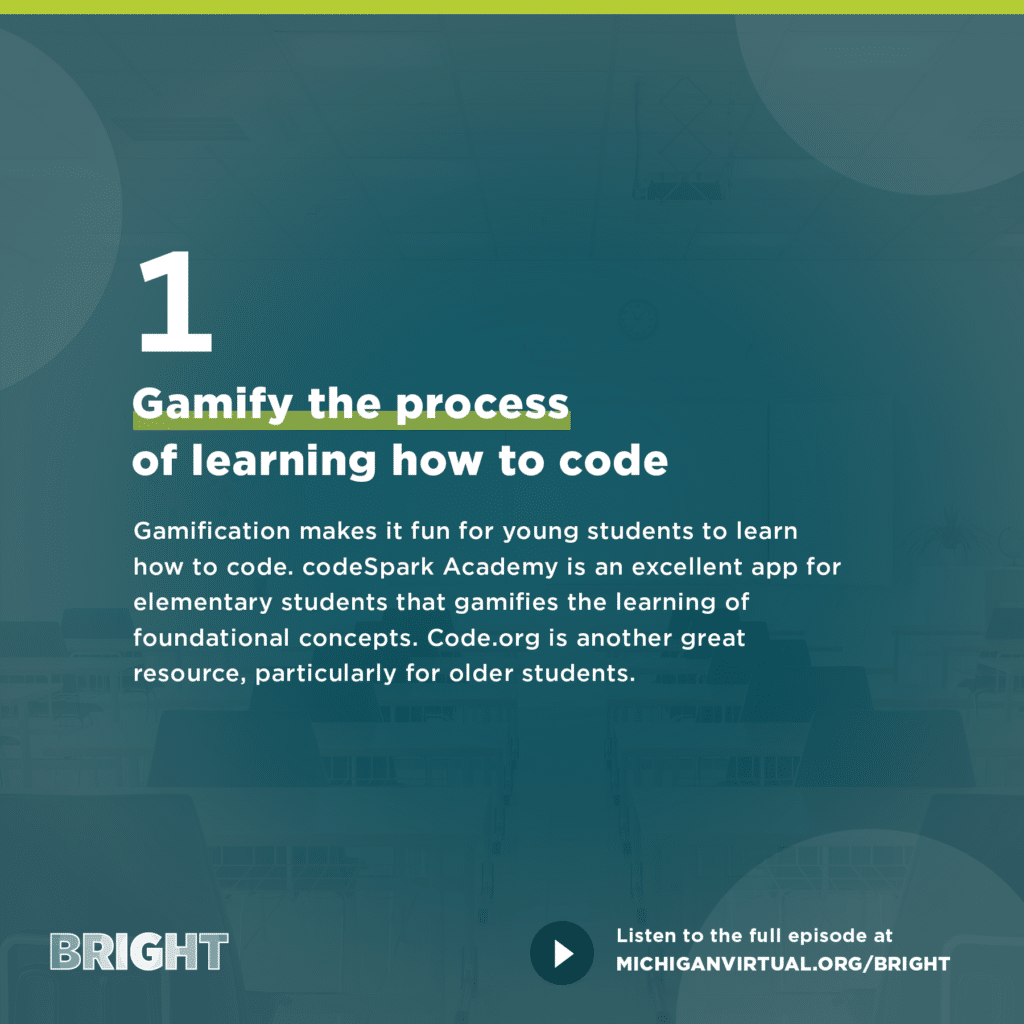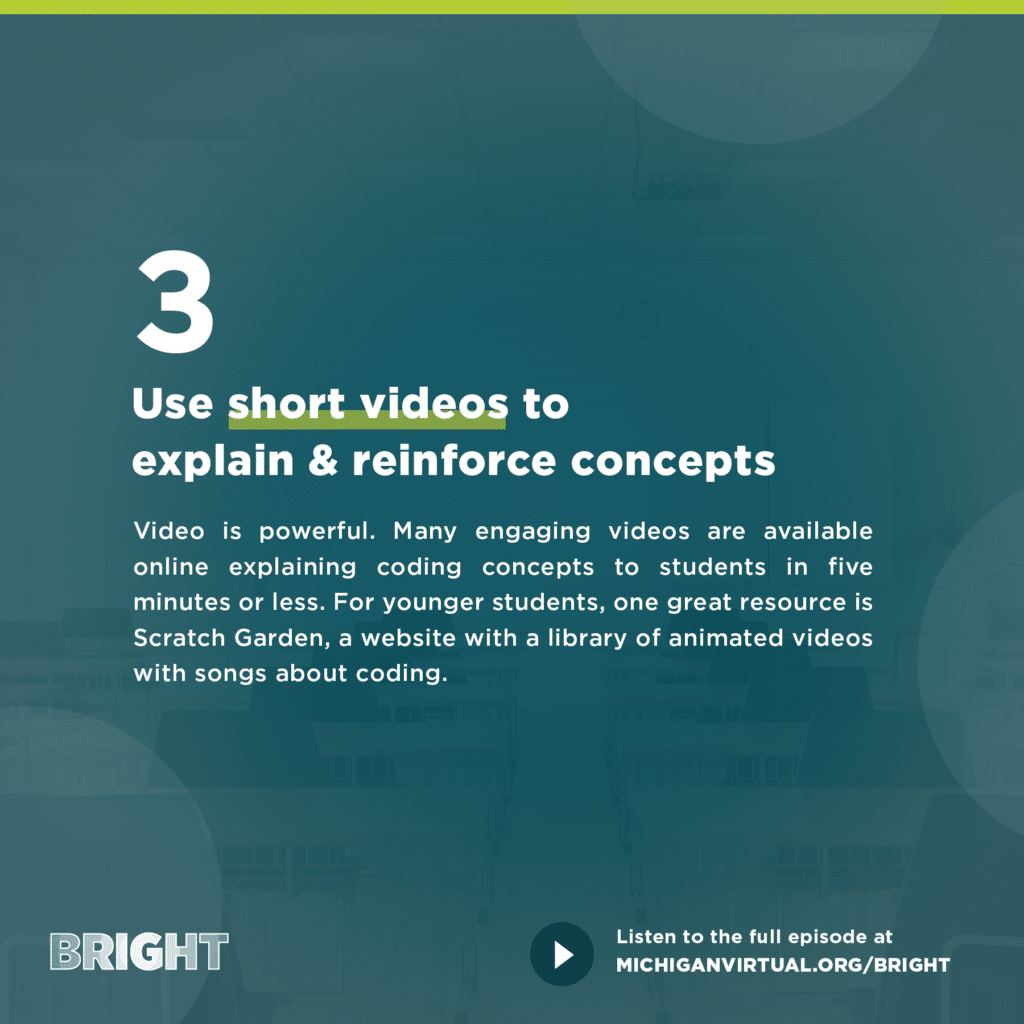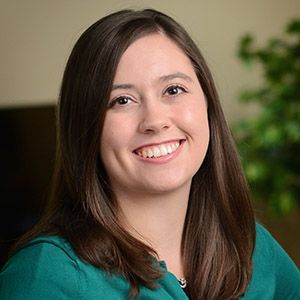Or listen on Apple, Spotify, Google, or another platform. Alternatively, you can read along with the transcript.
I hadn’t met Nicole Green before I interviewed her for this podcast. After marveling at her creative notetaking on Twitter during the MACUL 2021 conference, a colleague suggested I reach out to her.
When I emailed her to ask if she’d like to join me for an episode of the podcast, she replied, “As Junie B. Jones would say, “‘Wowie wow-wow!’ I would be honored to speak on your podcast! I’m excited to talk about coding with young students — it’s one of my favorite subjects!”
After that, I had a feeling that we would get along well.
In addition to being my “name twin” (my legal first name is Nicole, but I go by Nikki), Nicole is a technology teacher for MacArthur K-8 University Academy in Southfield Public Schools. She has that infectious energy that many teachers of young children possess. Talking with her, you can’t help but smile.
Here’s a sneak peek at our conversation:
A struggling student realizes his intelligence
There were several parts of my conversation with Nicole that moved me deeply. She told me a story about a student who struggled with reading and writing but began to thrive as soon he started coding in her class. “He became a leader in the classroom,” she told me. “I remember him saying to me, ‘Wow, I really am smart.’”
This story gave me chills. How powerful might this experience have been for a young boy who, based on his statement, may not have felt intelligent before seeing his own intelligence nurtured and appreciated in Mrs. Green’s classroom?
Closing the gender & racial gap in coding
Another neat thing about Nicole: She started a Girls Who Code club at her school. This organization’s mission is to close the gender gap in the tech industry.
On the Girls Who Code website, they report that in 1995, 37 percent of computer scientists were women, and, today, that percentage has dropped further to 24 percent. Their clubs aim to increase the number of young girls introduced to coding between the ages of 13 and 17, the age range in which they see the most significant drop-off in computer science interest.
Nicole is passionate about the benefits of teaching students how to code at a young age.
“Because the world that we live in is so technology-dependent,” she explains, “exposing them to how these things work is kind of like opening the box. The district I teach in is mainly African American, so exposing them to this field is important because this could be something they decide to go into in the future.”
The lesser-known history of the term “debugging” (and a lesson in perseverance!)
One video Nicole shares with her young students is the story of Grace Hopper. Grace was one of the first computer scientists ever and a rear admiral in the U.S. navy. She earned her Ph.D. in mathematics from Yale in 1934 and went on to join a team producing the first computers during World War II.
Grace is responsible for the popular computing term “debugging,” which she coined after a moth got trapped in the mechanisms of her team’s prototype. Today, you can still see this infamous moth preserved along with Grace’s notebook at the Smithsonian Museum.
Nicole says that Grace’s story helps to teach her students perseverance. When they get frustrated, she’ll echo back to this video and say, “Remember Grace Hopper and how she didn’t give up?”
“The problem-solving, the perseverance,” she told me with warm conviction, “there are so many big ideas that tie into coding. The little kids can do it, too, and they really enjoy it.”
3 tips for coding with young students
In Nicole’s full episode of the BRIGHT podcast, she shares her personal journey in learning to code, why she’s so passionate about bringing these experiences into her classroom, and her top three strategies for coding with young students.
You can listen to our conversation using the audio player above by subscribing to the BRIGHT podcast in your app-of-choice (find us on Apple, Spotify, Google, and more) or by reading along in the transcript.
Of course, we understand that educators are busier than ever and that many are struggling with burnout. Suppose you don’t have time to listen to Nicole’s full episode (which offers the fuller effect of her wisdom, energy, and examples). In that case, you can still benefit from a glimpse at her top three tips for coding with young students below!
- Gamify the Process of Learning How to Code
Gamification makes it fun for young students to learn how to code. codeSpark Academy is an excellent app for elementary students that gamifies the learning of foundational concepts. Code.org is another great resource for older students.
- Offer Opportunities for Creativity
Get creative with coding! For example, the codeSpark Academy app has a creative section where students can use coding to create stories and games. Such opportunities allow students to use their burgeoning technology skills to collaborate, problem-solve, and think creatively.
- Use Short Videos to Explain & Reinforce Concepts
Video is powerful. Many engaging videos are available online explaining coding concepts to students in five minutes or less. For younger students, one great resource is Scratch Garden, a website with a library of animated videos with songs about coding.
Related resources
- Explore: Nicole’s favorite resources










